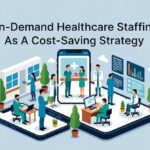If we’re honest, there are plenty of things to bring up in the “what’s lacking in healthcare” conversation. But health literacy in patients is a big one.
Health literacy is a person’s ability to find, understand, and use health-related information to make informed decisions about their health. And it’s lacking in nearly 36% of adults today.
There are two kinds of health literacy, personal and organizational health literacy. The latter refers to a health organization’s responsibility to make health information accessible and easy to understand.
As a healthcare professional, you’re involved in the latter. You have a big hand in your patients’ health literacy journey. Here’s what you can do to make it as seamless as possible.
Do Technology Walkthroughs
In a Pew Research Center Study comprising 10 questions testing Americans’ digital literacy, only 20% answered seven or more correctly, while 2% got all of them right. It’s safe to say that not everyone is on a level playing field regarding digital literacy and technological ability.
But that isn’t going to stop healthcare’s digital transformation. So, what can you do to ensure technology doesn’t hinder patients’ ability to grow their health literacy? Do technology walkthroughs with your patients.
For instance, walk them through how to use the patient portal. Show them how to use telehealth services and mHealth apps properly. Guide them through accessing credible health information online. Even if they need help with computer use, go the extra mile and extend that help to them.
Talk Openly About Their Financial Obligations
Unfortunately, many patients’ health literacy challenges are related to the financial side of things. For example, they don’t understand the costs of the services they’re using, who to pay, or how to pay them.
You can ease the financial education associated with healthcare by talking openly about financial obligations. For example, if a patient needs surgery, break down how much it will cost. And then have them follow up with their health insurance provider to understand the portion they’re responsible for.
Speaking of health insurance, have your patients go through an insurance session.
Have Every Patient Go Through an Insurance Session
A recent study by ValuePenguin revealed, “On average, 55% of respondents gave incorrect answers to questions about health insurance.” That’s more than half of people not clearly understand various health insurance-related topics.
This is frightening considering health insurance depicts a patient’s financial obligation. They need to understand the ins and outs of their particular health insurance plan to ensure they don’t get buried in unnecessary medical costs.
Have each patient set up a call with their insurance provider to walk through the details of their plan. Then, have them bring answers to a few basic questions to their next appointment to ensure they understand their plan.
Make it Comfortable for Patients to Communicate
Language barriers can be detrimental to a patient’s health literacy. If they can’t understand you, and you can’t understand them, there’s no way you can do your part in improving their health literacy.
Make it comfortable for your patients to communicate with you. For example, if a patient needs a translator, provide them with one. If a patient has a learning disability, accommodate it with specific tools. Or, if a patient feels more comfortable with someone they trust by their side, allow that.
Rely on Patient Feedback
Would you be surprised to find out that the pamphlets and flyers you’re handing out aren’t working? That they’re actually confusing your patients even more?
This kind of patient feedback is crucial to increasing their health literacy. If what you’re doing isn’t working, you need to find out what will, so your patients can bolster their health knowledge and decision-making.
Any time you go over something with a patient, follow up on it to see if they got what they needed.
For example, let’s say you email a patient with phone numbers to call about getting insurance. Give them a call a week or so later to see if they got in touch with someone and could get insurance.
After that, when they come in for their next appointment, you can ask if that communication method worked for them and get their feedback to better the experience for next time.
Put Your Patients in Contact With Those Who Can Help Them
As talented and knowledgeable as you are, you won’t be an expert on everything health-related. For example, a doctor may be the best person to talk to about symptoms and treatment, but not so much insurance.
You want your patients to get the most accurate, detailed information about whatever they’re inquiring about. So, if you can’t give it to them, put them in contact with the person or department that can.
Be Clear, Direct, and Patient
Health literacy in patients is much more likely to increase when you give information to them straight. No jargon. No fluff. Just the message in the simplest form possible.
Be clear and direct in every patient interaction. For example, if a patient needs to transition to a new medication, tell them why, what the benefits are, the potential side effects, and when they need to take it.
Patience is also essential. If a patient is genuinely having a tough time understanding something, the last thing you should do is get frustrated with them. Instead, reassure them that you have time to work through it with them and can get additional support if needed.
We aren’t sure how we can ask healthcare personnel to do more than what they’re already doing. But if you can clear a spot on your plate for improving patient health literacy, the benefits for both patients and staff are worth it.
Even if you incorporate only a few of the tips in the above list, your patients can take better care of themselves, and you can take better care of your patients.
Read Also
- Creative Approaches to Alleviating Healthcare Staff ShortagesHospitals and clinics are facing staff shortages, which makes it harder to take care of patients well. Finding simple and useful solutions is very important. Easy changes like flexible work hours, good training, and chances to grow can help staff stay happy. Technology, like online doctor visits and helpful tools, can make work easier. Smart… Read more: Creative Approaches to Alleviating Healthcare Staff Shortages
- Understanding the Role of Sterilizers in Healthcare FacilitiesHave you ever wondered how hospitals keep their equipment safe enough to use on dozens of patients every day? Most people never think about what happens behind the scenes, yet these hidden steps play a huge role in patient safety. Sterilizers are part of that system, working quietly to remove harmful germs before any instrument… Read more: Understanding the Role of Sterilizers in Healthcare Facilities
- Building Healthcare Access Where It’s Needed Most: A Local First ApproachHealthcare shouldn’t depend on where you live. But in the U.S., it often does. If you’re in a big city, you likely have options. If you’re in a small town or an underserved neighbourhood, it’s a different story. To fix this, more healthcare leaders are turning to a local-first approach. That means putting clinics and… Read more: Building Healthcare Access Where It’s Needed Most: A Local First Approach
- Revolutionizing Patient Engagement: Innovative Solutions for Improved Care and Treatment SuccessNavigating healthcare system can often feel overwhelming for patients. Between appointments, prescriptions, and treatment regimens, it’s easy for crucial details to get lost in the shuffle. That’s why effective patient engagement and support solutions are more important than ever. Companies like Serva Health, with their pharma hub services, are stepping up to ensure that patients… Read more: Revolutionizing Patient Engagement: Innovative Solutions for Improved Care and Treatment Success
- On-Demand Healthcare Staffing As A Cost-Saving StrategyThis is an exciting and challenging time for the healthcare industry. Technology is advancing almost faster than humans can keep pace. New legislation is creating fresh challenges for the future of healthcare, and the shifting population demographic continues to place more pressure on healthcare facilities. Amidst these changes, healthcare facilities are facing a critical staffing… Read more: On-Demand Healthcare Staffing As A Cost-Saving Strategy
- The Benefits of Contract Labor Staffing in HealthcareThe most successful healthcare facilities today aren’t just reacting to crises—they are building workforce resilience to withstand them. Unpredictable patient demand, coupled with persistent nursing shortages, has made the traditional staffing model obsolete. Relying on mandatory overtime to cover a sudden surge in capacity is a recipe for high turnover and rising employee burnout relief… Read more: The Benefits of Contract Labor Staffing in Healthcare







